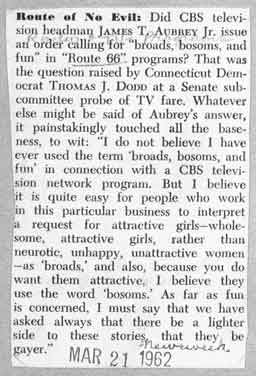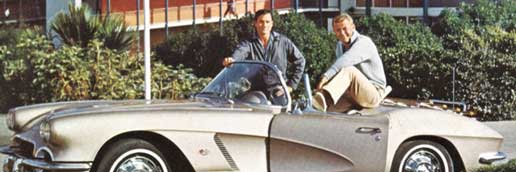Television's most travelled road show "Route 66" is packing its bags for another season of barnstorming after logging 60,000 miles across 36 states in its first two years of existence.
Logistics of transporting the $250,000 of equipment and 40 men required to produce 32 filmed episodes each season on CBS-TV obviously poses a variety of problems. Man who shoulders those responsibilities is transportation chief Al Schultz, veteran of 10 years in the employ of producer Herbert B. Leonard.
Under his supervision the "Route 66" caravan has kept rolling in the roughest of weather, never missing its daily mileage quota, and being charged with only one minor accident when a gawking motorist collided with one of the show's trucks.
Once, however, in Ely, Nev., all but one truck took the wrong turn and headed 60 miles in the direction of Salt Lake City instead of the intended destination of Page, Ariz., because a key road sign had been removed. On the long haul from Los Angeles to Louisiana a truck turned up missing in the vicinity of Van Horn, Tex., but help from cooperative highway patrol and sheriff's department quickly located the lost vehicle.
Schultz feels he's solved this problem this season. The trucks now are equipped with two-way radio communications. "Now," he says, "all I have to worry about is sun spots."
"Route 66" rolling stock is comprised of four trucks - a car hauler which transports the two corvettes and three passenger cars used in the show, a sound truck containing camera equipment and mounted with a platform capable of raising a camera and its operators 28 feet in the air, a 35-foot semi-trailer containing wardrobe and dressing room, a generator supplying electricity and heat for the company, and a 500-gallon supply of water, and a 35-foot semi-trailer containing grip, prop, electrical and special effects equipment.









